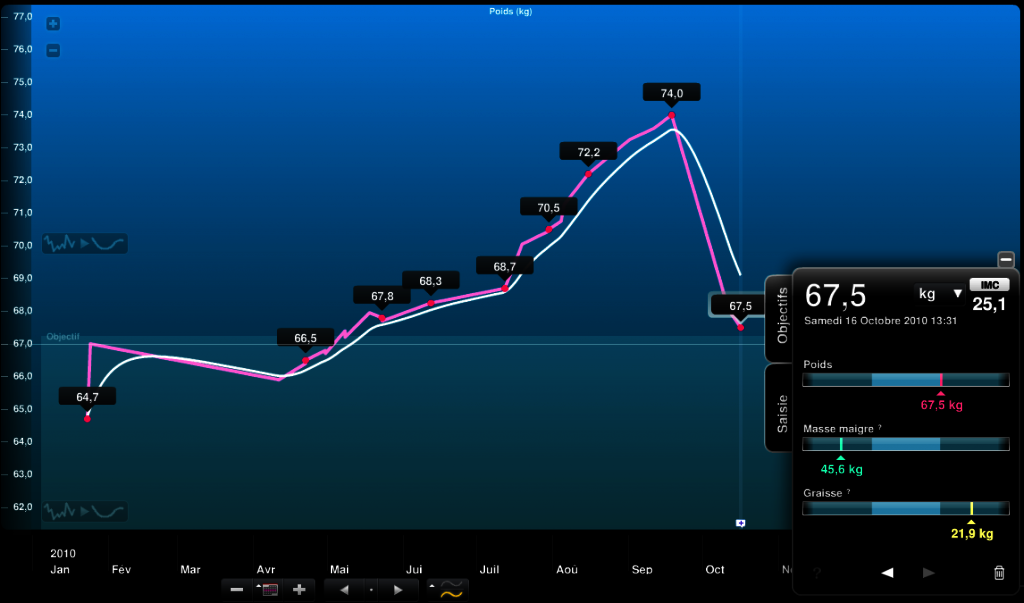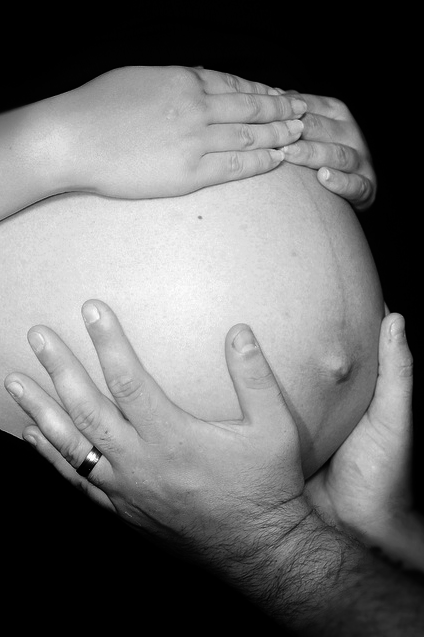Pregnancy often leads to significant weight gain. However, there are a many little tips that can help you prevent excessive weight both during and after pregnancy. Here are just some.
Keep an eye on your diet
On average, a woman takes on between 25 and 35 pounds during pregnancy, so don’t panic! It’s not all about crash dieting to lose weight, but these two basic rules will help you to keep a good silhouette during your pregnancy: a controlled diet and some sport. As you can see, it’s not so difficult.
Did you know that during the first three months you should keep eating around 1900-2500 calories a day? In fact, for the last six months you should increase your calorie intake by 300 calories. And if you’re underweight then you should increase your intake by 500 instead of 300! However if you’re overweight you only need an extra 150-200 calories. Some people recommend to eat for two whislt prégnant, but don’t listen to this. Simply apply the simple rule of having three starchy meals a day at fixed times to avoid any temptation to nibble and snack.
For the child’s health, it’s also better to cook by steaming or baking, trying to only add the fat after cooking. In order to control the majority of weight changes, we’d recommend the use the Withings scale. It allows you to track your weight easily and simply measure the variations in the long term. As you can see in the picture below, the user has taken on almost 20 pounds during her pregnancy. We can see precisely the increase of weight gradually during these nine months with an acceleration in the last quarter and a steep drop upon giving birth.

Maintain a minimum level of physical activity
During your pregnancy, it’s strongly recommended to do some physical activity as well. A must is antenatal gymnastics, which includes breathing exercises and muscle relaxation to keep you in shape and prepare you for childbirth. It’s likely that, during pregnancy, the mother may become anxious or tense which tends to contract the muscles. Performing 5 to 10 minutes of this activity each day can strengthen your abdominal muscles, loosen your articulations, relax your nerves and activate your circulation – leading to feeling less pain. In addition, you can try out soft sports such as swimming, walking and yoga. Of course, before taking on these exersizes, it’s best to discuss this with your doctor first as each woman is different and the month of your pregnancy affects the level of physical effort that you should participate in.
Geting back into shape after pregnancy
During pregnancy, the body makes stocks of localised fat in the breast, thighs, hips and buttocks. Your muscle mass melts during the last months of pregnancy and the first weeks of the baby’s life, due to the lack of exercize. Therefore, it’s important to exercizewhen you are ready with a small amount of physical activity such as relaxed swimming, light jogging, cycling or yoga. But beware, it’s important to start slowly, you don’t want to over-do it too soon!
For your diet, you should continue to eat regularly to regain energy after so much effort from your body. If you wish, you can then decide to set a goal of losing 500 grams to 1 kg per week, but no more as the body will struggle to adapt to large changes! Do not remove any food groups either but feel free to play more on the quantities whilst being careful not to limit fat and sugar, preserved fruits, vegetables, starches, meat, fish, pulses and dairy products. Your Withings scale will definitely be your best friend during this period. It will allow you to better measure the muscle mass and body fat ratio to give real time feedback on your efforts!
I hope these tips will be helpful to our future readers or young mothers. Please comment below with your advice and feedback on how you lived your pregnancy and the months that followed it.



